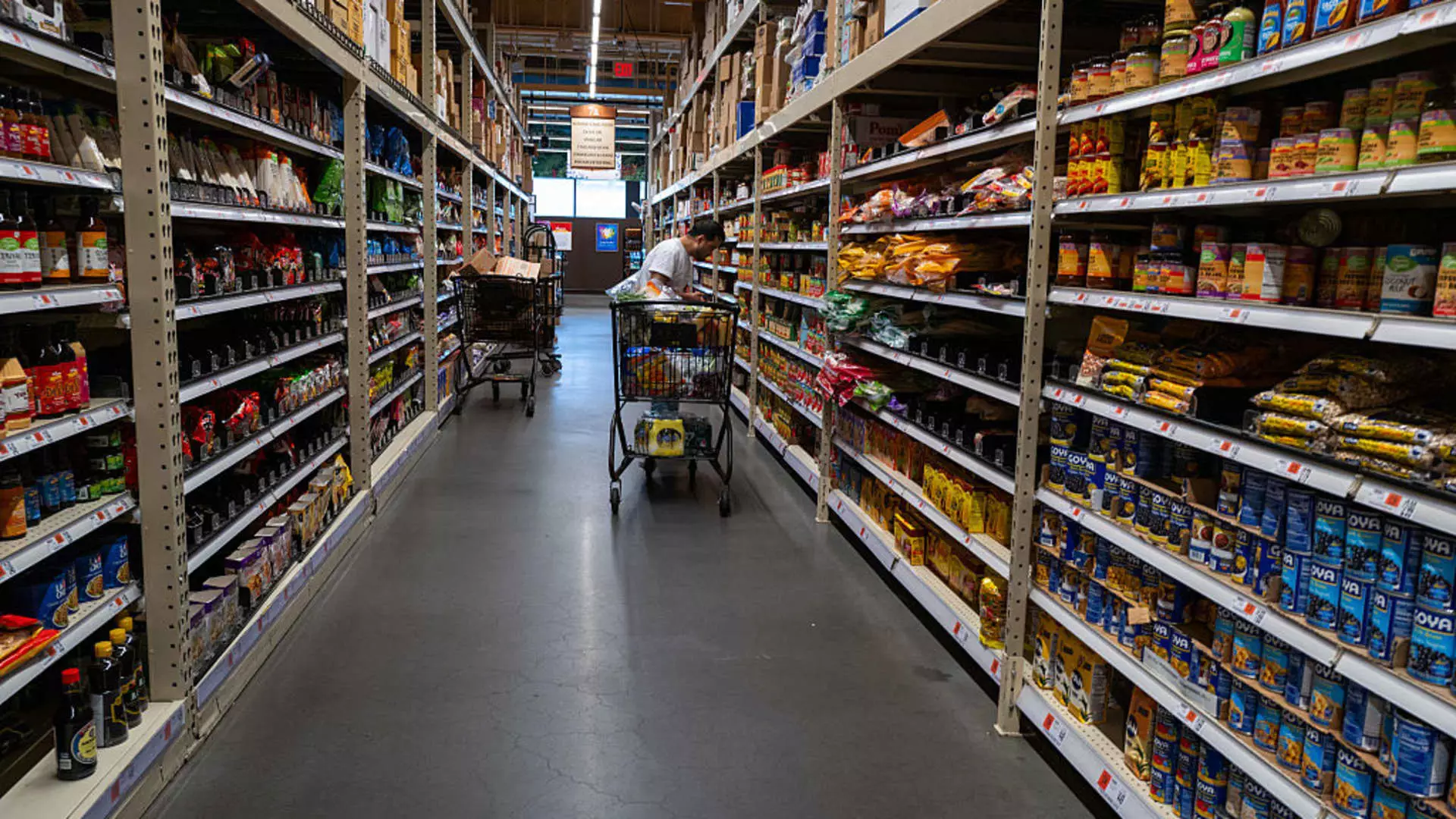As April unfolded, the economic indicators painted a stagnant picture of inflation, showcasing the potential pitfalls of a fragile economy. The latest data from the Commerce Department revealed that the personal consumption expenditures price index—the Federal Reserve’s preferred gauge of inflation—rose only modestly by 0.1% for the month, maintaining an annual rate of 2.1%. Despite some optimism within the Dow Jones consensus forecast, the reality is that consumers remain underwhelmed. The core inflation rate, which strips out food and energy costs, only marginally deviated from expectations, hinting at a deeper malaise within consumer spending patterns.
The Ebbing Consumer Confidence
One of the most troubling signs emerging from the April statistics is the deceleration in consumer spending, which saw a mere 0.2% increase compared to the more robust 0.7% rise in March. This slowdown is indicative of a shift in consumer sentiment, one that leans toward caution rather than exuberance. As consumers grow wary of financial uncertainties—exemplified by a marked increase in personal savings to 4.9% from the previous figure—there is a clear message that many are adopting a “wait and see” approach. With personal income rising by 0.8%, the question lingers: why are consumers reluctant to spend? The uncertainty bred by President Trump’s contentious tariff policies might be at the heart of this consumer hesitation.
The Tariff Paradox
Trump’s administration imposed sweeping tariffs with the ambition of balancing an uneven trade landscape, highlighted by a staggering $140.5 billion trade deficit in March. However, these fervent actions are beginning to backfire. The tariffs, initially set at an alarming 10%, are now under scrutiny after an international court deemed them an overreach of authority. Beyond legal battles, the psychological impact on consumers could be profound, as the threat of price hikes lingers. Economic history suggests that tariffs often generate only a minimal increase in consumer prices, yet current fears of inflation coupled with stagnant wage growth can stymie economic momentum.
The Federal Reserve’s Quandary
While Trump has been vocally pushing the Federal Reserve to lower interest rates to stimulate growth, the central bank finds itself in a precarious position, attempting to navigate between political pressure and economic prudence. Fed Chair Jerome Powell’s first face-to-face meeting with the President in recent times underscored this difficulty, with the Fed advocating for decisions grounded in economic fundamentals, not political whims. The uncertainty surrounding trade policies complicates the Fed’s ability to make informed decisions, as a potential resurgence of stagflation—a scenario not seen since the early 1980s—lurks in the shadows, intensifying the stakes.
Traditional vs. Contemporary Economic Theories
Historical evidence shows that tariffs can create localized price increases, but the prolonged ramifications of Trump’s policies may provoke more than just fleeting inflation. The specter of stagflation, characterized by stagnant growth paired with rising prices, raises alarms among economists who remember the crisis of the late 20th century. The intertwining of tariffs and rising consumer prices introduces a dynamic that could upend the economic recovery, leading to skepticism and further restraint in both consumer spending and business investment.
In this complex interplay of tariffs, inflation, and consumer sentiment, it becomes evident that a balanced approach is paramount. While protectionist policies may appear to harbor benefits in theory, their practical implications can sow distrust among consumers and inhibit growth. As the economic landscape shifts under the weight of these tariffs, the urgency for intelligent dialogue and sustained policy refinement has never been greater. The intersection of trade and consumer confidence will ultimately dictate the path forward, and leaders must prioritize strategies that foster stability over short-term gains.


Leave a Reply